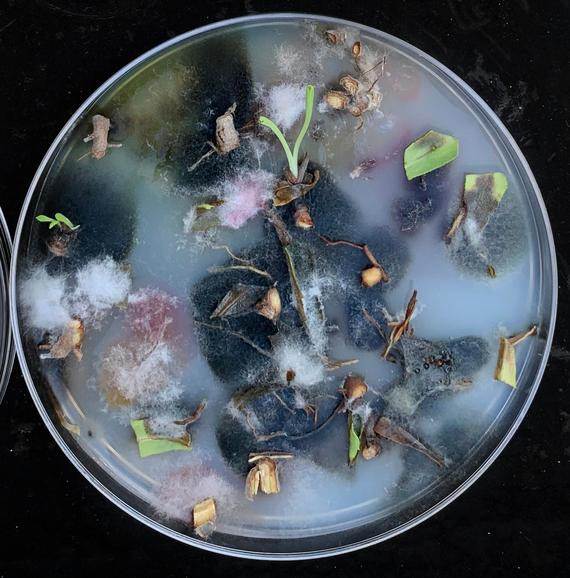With climate change and human populations on the rise, one of earth's biggest problems is deforestation as a direct need to grow more crops and devote more space for raising livestock. Combating the issue are extreme temperature changes and droughts and scientists have been trying to find a solution for decades. In the newest episode of the Overheard at National Geographic podcast, listeners will learn about a solution that could be earth’s new mightiest heroes in “Spores of Hope.”
Microbiologist Rusty Rodriguez has been studying the relationship between plants and microbes since the 1990’s when he discovered fungus on grass that was thriving in extremely hot areas of Yellowstone National Park. In lab tests, grass without the fungus would die under extreme heat while grass with the fungus not only lived, but thrived. The question is, could this same fungus that makes grass heat resistant also work on food crops?
Writer Joel Bourne Jr. joins podcast co-host Peter Gwin to add some background information and insight on the history of Genetic Modified Organisms (GMOs) and how the experiment that was meant to help crops feed more people hasn’t gone according to plan. His book, The End of Plenty: The Race to Feed a Crowded World, chronicles these challenges in greater detail. He shares that despite having 50,000 edible plants on earth, the bulk of the calories that humans consume come from just four: corn, rice, wheat, and soy.
With added stress to crops leading to deforestation in an effort to devote more space to getting the same amount of food out of the soil, the problems of climate change become more expansive. Crops need to become more heat and drought tolerant if things are going to change for the better. The answer could come from the same fungus that Rusty Rodriguez discovered on grass plants in Yellowstone.
Similar to how probiotics in yogurt help our digestive system, these fungi help plants keep up with extreme temperatures. They can’t remove the stressors from the environment, but they form a symbiotic relationship with the plants that lighten the burden.
Scientists have already applied this helpful fungi to the big four crops (corn, rice, wheat, and soy) in addition to tomatoes and watermelon with great results, making the crops more heat tolerant. This episode also talks about how two-thirds of the land set aside to grow crops is used for livestock that becomes meat, which in turn eat a lot of corn and soy. Reducing meat consumption is another key component to helping to impending global food crisis if things don’t change.
You can listen to this unique conservation story and read a transcript on the official website for the Overheard at National Geographic podcast.

